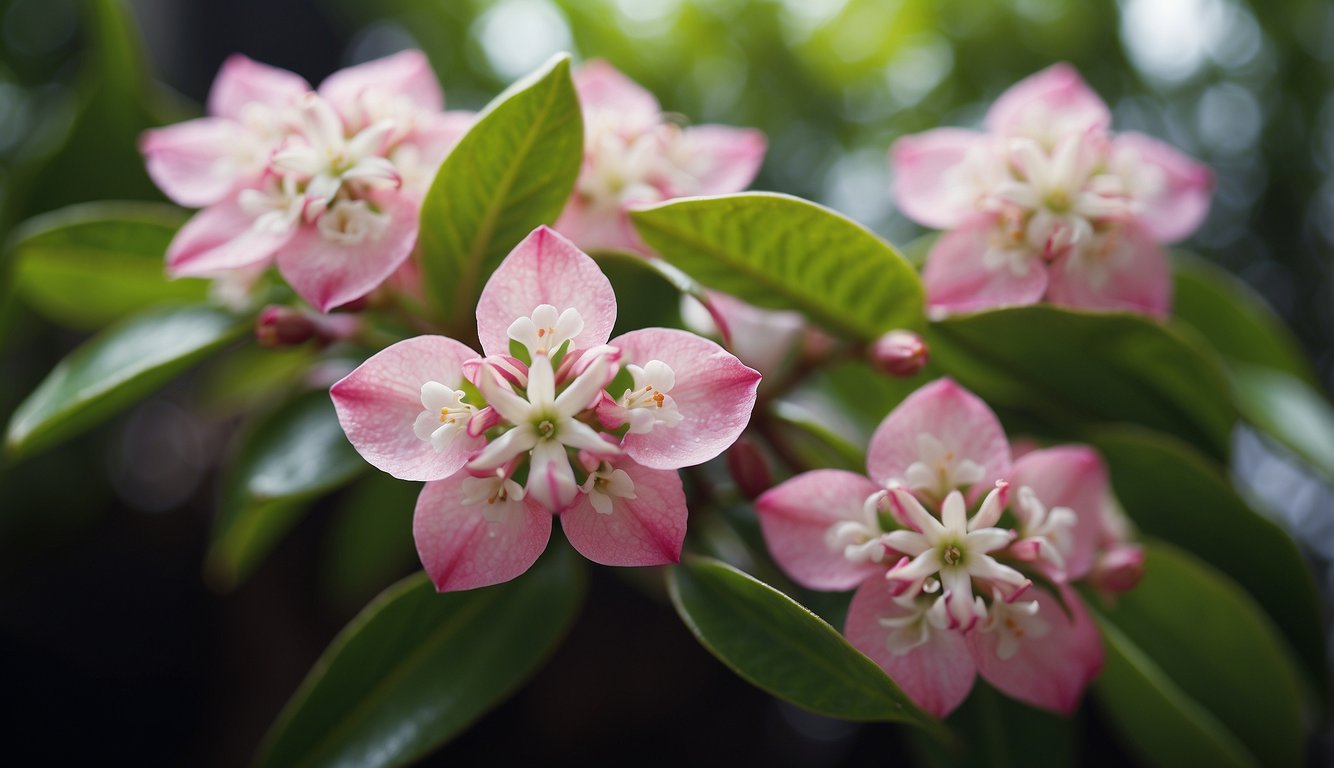TheHerbProf.com is a treasure trove of knowledge for those interested in natural healing and herbal remedies. The website is run by Paul Johnston MD. A naturopathic who has not only received extensive education in the field but also has personal experience in self-healing.
I have always been fascinated by the beauty of the hoya plant bloom. Hoyas, also known as wax plants, are tropical vines that are easy to care for and can bloom year-round under the right conditions. The flowers of a hoya plant are truly stunning, with their star-shaped petals and sweet fragrance.
Getting a hoya plant to bloom can be a challenge, but with the right care and attention, it is possible to enjoy these amazing flowers in your home. There are many different varieties of hoya plants, each with its own unique characteristics and blooming patterns. Some hoya plants bloom more readily than others, while some require specific conditions to produce flowers. Understanding the needs of your particular hoya plant is key to encouraging it to bloom.
Understanding Hoya Plants
Botanical Profile – Hoya Plant Bloom
Hoya plants, also known as wax plants, are a species of flowering plants that belong to the Apocynaceae family. These plants are native to Asia and Australia and are known for their thick, waxy leaves and fragrant flowers. There are over 200 species of Hoya plants, each with its own unique foliage and flower characteristics.
The common name “wax plant” comes from the waxy texture of the leaves and stems. The leaves of Hoya plants are typically oval-shaped and can range in size from small to large, depending on the species. The flowers of Hoya plants are star-shaped and grow in clusters. Each flower has a waxy texture and a sweet fragrance that attracts pollinators.
Growth Habit and Characteristics
Hoya plants are a type of vine and can be grown both indoors and outdoors. They are known for their succulent leaves and stems, which allow them to store water and survive in dry conditions. Hoya plants are also epiphytes, which means they grow on other plants rather than in soil.
Hoya plants are relatively easy to care for and can thrive in a variety of conditions. They prefer bright, indirect light and well-draining soil. Overwatering can be a problem for Hoya plants, so it’s important to let the soil dry out between waterings.
Hoya plants are a fascinating species with unique foliage and flower characteristics. They are easy to care for and can be grown both indoors and outdoors. With the right conditions, Hoya plants can thrive and produce beautiful, fragrant flowers.
Optimal Growing Conditions – Hoya Plant Bloom
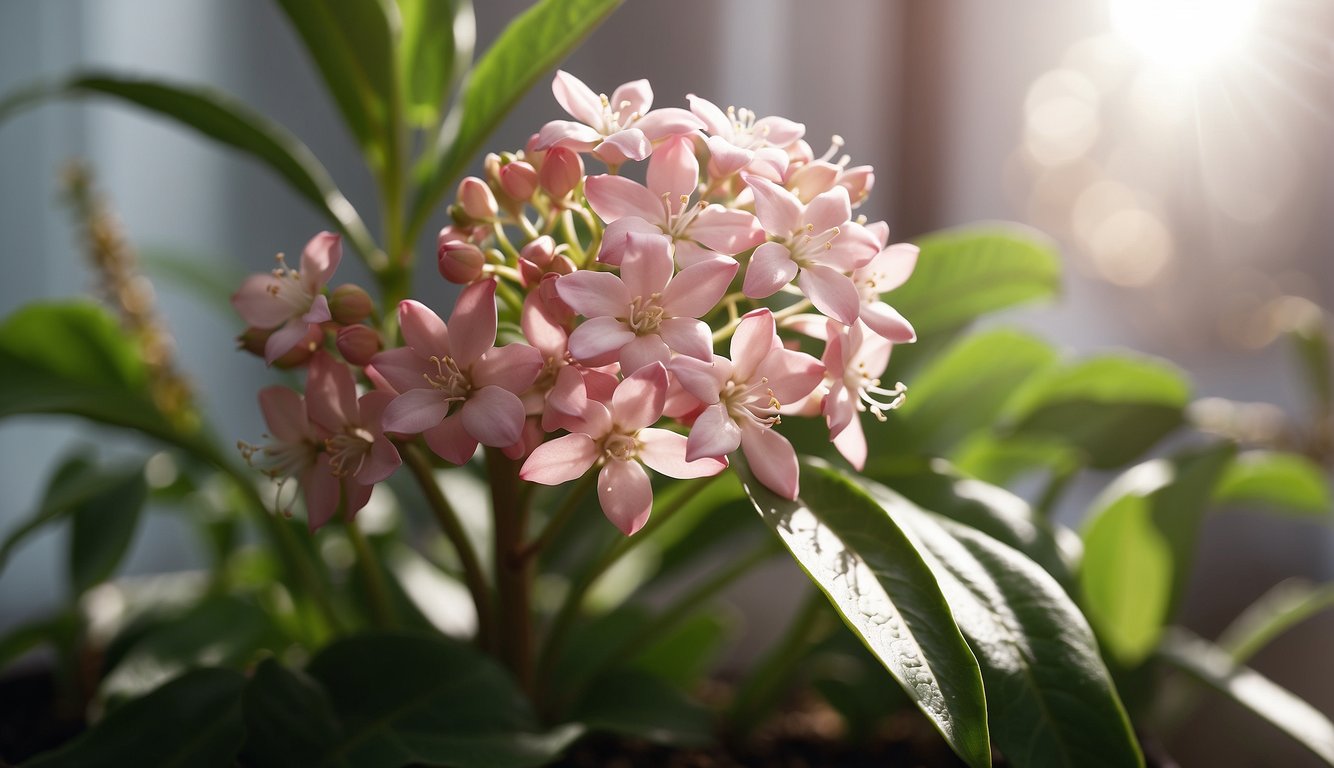
To get your Hoya plant to bloom, it is important to provide the optimal growing conditions. In this section, I will discuss the light requirements, watering techniques, soil and drainage, temperature, and humidity needed for your Hoya plant to thrive.
Light Requirements
Hoya plants require bright, indirect light to bloom. They can also tolerate some direct sunlight, but too much can scorch their leaves. If you have a south-facing window, it is best to place your Hoya plant a few feet away from the window or behind a sheer curtain to filter the light.
Watering Techniques
Hoya plants prefer to be slightly root-bound, so it is best to use a small pot with a drainage hole. Water your Hoya plant when the top inch of soil is dry to the touch. Overwatering can cause root rot, so make sure the soil is well-draining and that excess water can escape through the drainage hole.
Soil and Drainage – Hoya Plant Bloom
Hoya plants prefer a well-draining soil mix that is rich in organic matter. You can use a mix of peat moss, perlite, and vermiculite to create a soil mix that will provide the right balance of moisture and drainage. It is important to make sure that the pot has a drainage hole to prevent water from pooling in the soil.
Temperature and Humidity
Hoya plants prefer temperatures between 60-80°F (15-27°C) during the day and 50-70°F (10-21°C) at night. They also prefer a humid environment, so it is best to mist the leaves regularly or place a tray of water near the plant to increase the humidity.
By providing the optimal growing conditions, your Hoya plant will be more likely to bloom and produce beautiful, fragrant flowers.
Cultivation and Care – Hoya Plant Bloom
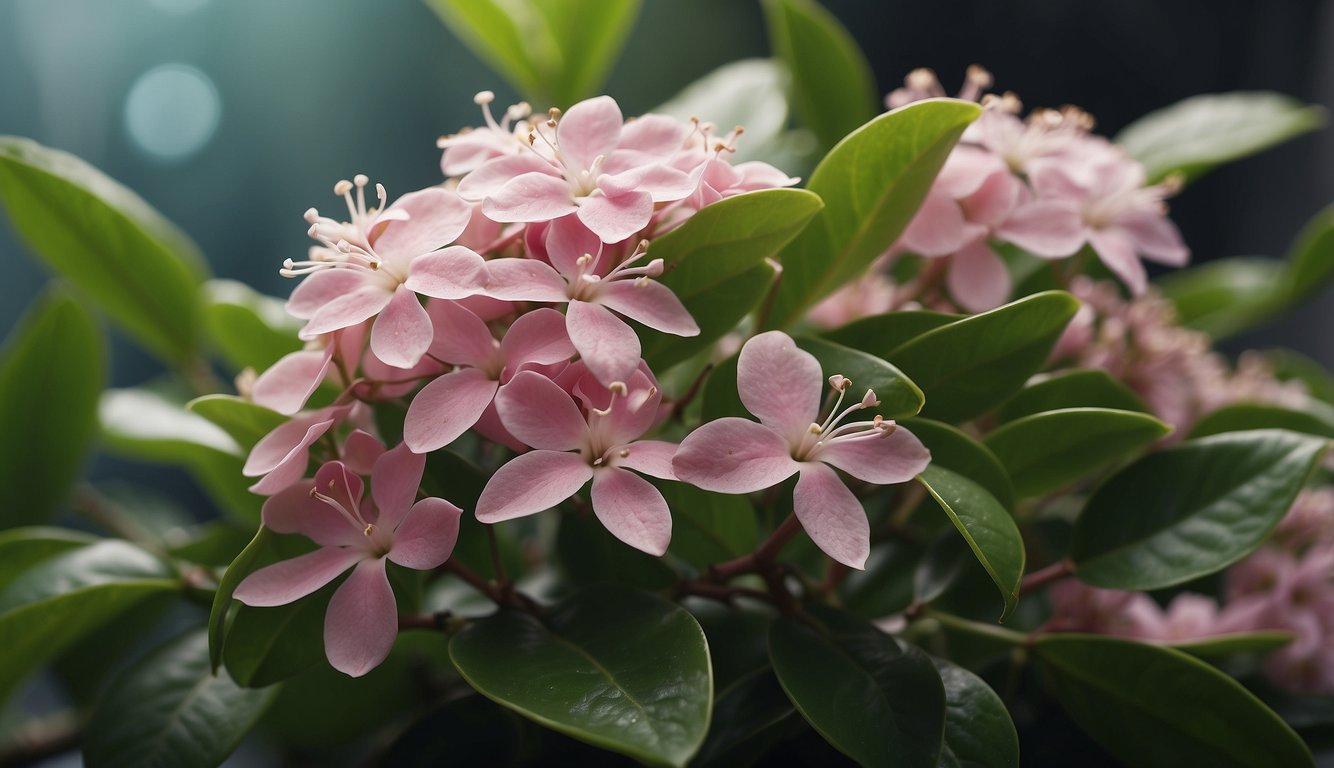
Hoya plants are known for their beautiful and fragrant blooms, but to achieve this, proper care and maintenance are essential. In this section, I will cover the most important aspects of Hoya plant cultivation and care.
Fertilization and Nutrients – Hoya Plant Bloom
Hoya plants require regular fertilization to support healthy growth and blooming. A balanced fertilizer with equal parts nitrogen, phosphorus, and potassium is recommended. Fertilize your Hoya plant every two weeks during the growing season, but reduce the frequency during the dormant period.
Pruning and Maintenance
Pruning is essential for maintaining the shape and size of your Hoya plant. Remove any dead or damaged leaves or stems regularly. Pinch back the tips of the vines to encourage branching and fuller growth. Regular maintenance, such as wiping the leaves with a damp cloth, will help to prevent dust buildup and promote healthy foliage.
Repotting and Root Health – Hoya Plant Bloom
Hoya plants prefer to be slightly root-bound, so repotting is only necessary every two to three years. When repotting, choose a well-draining soil mix with a slightly acidic to neutral pH. Check the roots for signs of root rot, which can occur due to overwatering or poor drainage.
Pest and Disease Management
Hoya plants are generally resilient to pests and diseases, but occasional infestations can occur. Mealybugs, aphids, and scale are the most common pests that can affect Hoya plants. Regularly inspect your plant for signs of infestation, such as sticky residue or white, cotton-like masses. If detected, treat with an insecticidal soap or neem oil. Root rot can also occur due to overwatering or poor drainage. If detected, adjust your watering schedule and repot in fresh soil.
By following these tips for fertilization, pruning, repotting, and pest control, you can ensure that your Hoya plant remains healthy and produces beautiful blooms.
Encouraging Hoya Blooms
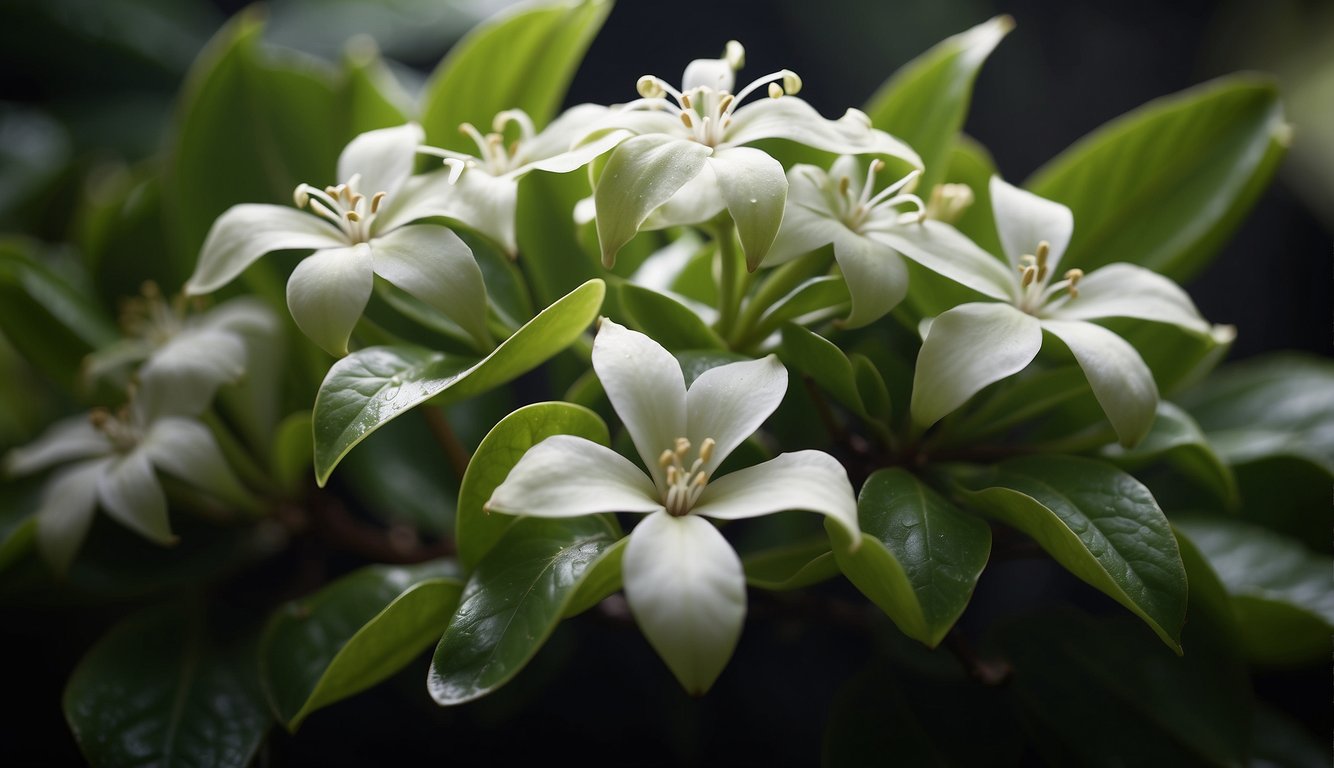
As a hoya plant enthusiast, I have learned a few tricks to encourage my plants to bloom. In this section, I will share my knowledge on how to stimulate flowering, the bloom cycles and seasons, and common bloom challenges.
Stimulating Flowering
To stimulate flowering in hoya plants, there are a few things to keep in mind. First, make sure your plant is mature enough to bloom. According to Plantophiles, hoya plants need to be at least 4-5 years old before they are mature enough to produce blooms.
Secondly, provide your hoya plant with adequate light. Hoya plants require bright, indirect sunlight to bloom. If your plant is not getting enough light, it may not produce buds. However, be careful not to expose your plant to direct sunlight as it can scorch the leaves.
Finally, avoid overwatering your hoya plant. Overwatering can lead to root rot, which can prevent your plant from blooming. Allow the soil to dry out slightly between waterings, and make sure your pot has good drainage.
Bloom Cycles and Seasons – Hoya Plant Bloom
Hoya plants typically bloom in the spring, summer, or fall. However, the exact bloom cycle and season can vary depending on the species of hoya plant. Some hoya plants bloom multiple times a year, while others only bloom once a year.
Hoya plants produce clusters of flowers called umbels. The umbels can contain anywhere from a few to several dozen individual flowers. The flowers can be white, pink, purple, red, or yellow, and many are fragrant.
Common Bloom Challenges
There are a few common challenges that can prevent hoya plants from blooming. One challenge is pruning too much or too often. Pruning can remove the buds that would have produced flowers. Another challenge is using a pot that is too large for the plant. A pot that is too large can lead to overwatering and root rot, which can prevent blooming.
To encourage hoya blooms, make sure your plant is mature enough, provide adequate light, avoid overwatering, and be mindful of common bloom challenges. By following these tips, you can enjoy the beautiful flowers of your hoya plant.
Special Considerations – Hoya Plant Bloom

Pot and Trellis Selection – Hoya Plant Bloom
When it comes to growing Hoya plants, selecting the right pot and trellis is crucial. Hoyas are known for their vining and climbing nature, so it is essential to choose a pot that is deep enough to accommodate the roots and wide enough to support the plant’s growth. A hanging basket or a container with a trellis is an excellent choice for a Hoya plant. The trellis should be sturdy enough to support the weight of the plant and allow it to climb and spread.
Propagation Techniques
Propagating Hoya plants is relatively easy. The most common method is by using stem cuttings. Cut a stem from a mature Hoya plant and let it dry for a day or two. Then, plant the cutting in a pot with well-draining soil and keep it in a warm, bright location. The cutting should root within a few weeks and start to grow.
Varietal Differences – Hoya Plant Bloom
Hoya plants come in various species and cultivars, each with unique characteristics. The most common Hoya species is the Hoya carnosa, which has oval or heart-shaped leaves and produces clusters of star-shaped flowers. Other Hoya species have different leaf shapes and flower colors. Some Hoyas bloom more readily than others, and some require specific growing conditions to flower.
In addition to species differences, there are also varietal differences within each species. Some Hoya carnosa cultivars, for example, have variegated leaves, while others have solid green leaves. When selecting a Hoya plant, consider the species and cultivar to ensure that it fits your growing conditions and aesthetic preferences.
Overall, growing Hoya plants requires patience, maturity, and the right growing conditions. With the proper care and attention, Hoya plants can produce beautiful blooms and spurs, making them a lovely addition to any home or garden.
Advanced Tips and Tricks – Hoya Plant Bloom
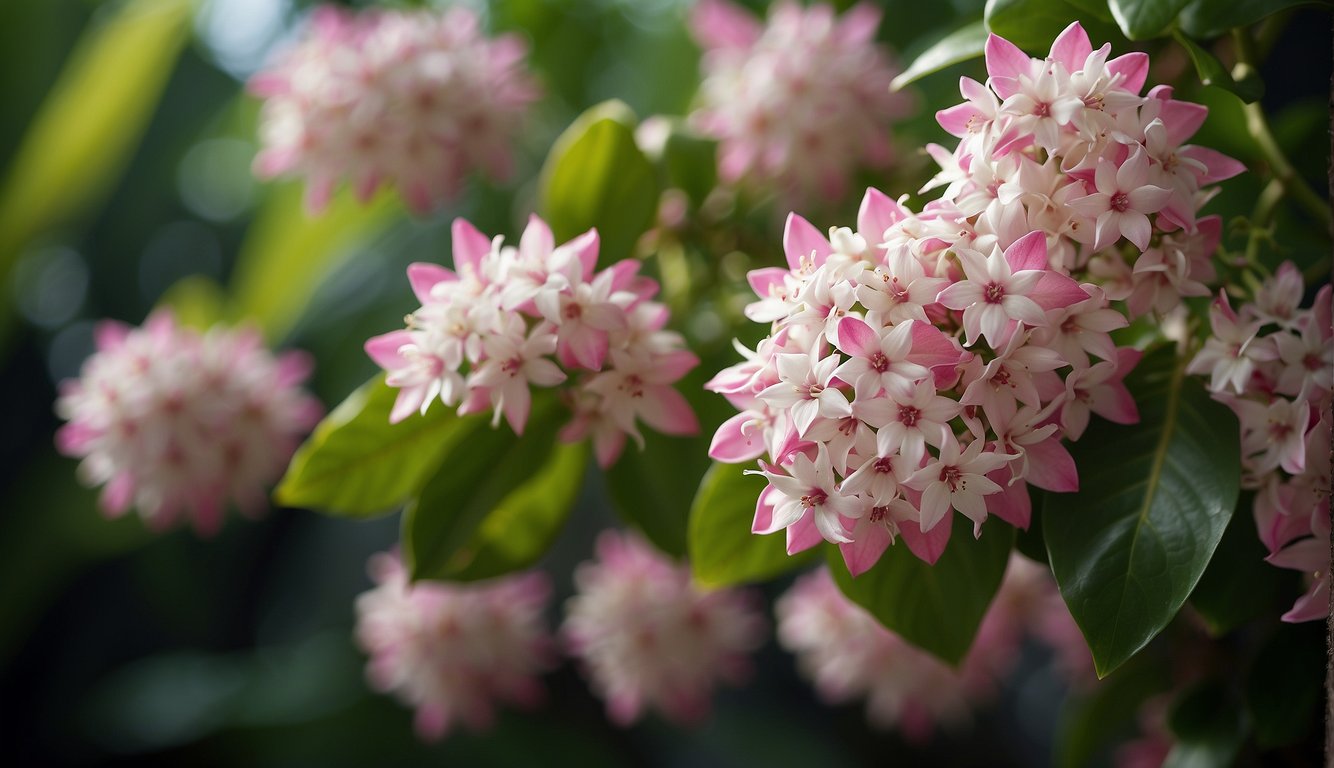
Enhancing Bloom Quality
To enhance the bloom quality of your Hoya plant, it is essential to maintain a balanced nutrient supply. Hoya plants require a well-draining soil mix, which contains perlite and is rich in phosphorus, nitrogen, and potassium. However, avoid overfeeding your plant, as excess nutrients can cause burn or scorch on the waxy leaves.
Environmental Adjustments
Environmental adjustments can significantly impact the blooming of your Hoya plant. Ensure that your plant receives bright indirect light or grow light for at least 12 hours a day. During winter months, provide supplemental lighting to ensure the plant receives sufficient light. Additionally, maintain a humid environment around your Hoya plant, preferably between 40% to 60% humidity. You can use a humidifier or place a dish filled with stones and water under the pot to increase humidity.
Supplemental Feeding and Lighting
Supplemental feeding and lighting can help your Hoya plant bloom throughout the year. Use a balanced water-soluble houseplant fertilizer, such as 5-10-5, once a month in the spring, summer, and fall. The middle number (10) is phosphorus, which promotes flowering.
If your Hoya plant is root-bound, repot it into a larger container to provide better nutrient and water uptake. However, avoid repotting during the winter months, as it can cause stress to the plant. If you notice brown or yellow leaves, adjust the plant’s environment or feeding schedule to prevent further damage.
Overall, Hoya plants are tropical plants native to Asia and Australia and are popular indoor houseplants. By following these advanced tips and tricks, you can help your Hoya plant bloom and thrive.
Hoya Plant Bloom
Let’s dive into the world of Hoya plant blooms!
Firstly, we have the Hoya’s bloom cycle. It’s a sight to behold! The blooms are star-shaped and often fragrant. They’re worth the wait!
Next, let’s talk about light. Hoyas love bright, indirect light. It helps them bloom!
Ever heard of patience? Hoyas test it! They can take years to bloom for the first time. But trust me, it’s worth it!
And let’s not forget care. Don’t overwater your Hoya. And never remove the spent bloom stalks. New flowers bloom from the old stalks!
Remember, folks, gardening is all about patience and love. So, let’s keep planting, keep nurturing, and keep enjoying the beauty of our plants!
For more plant wisdom, don’t forget to visit my homepage at theherbprof.com. Keep those green thumbs up!
References – Hoya Plant Bloom
Little Herb Encyclopedia, by Jack Ritchason; N.D., Woodland Publishing Incorporated, 1995
The Ultimate Healing System, Course Manual, Copyright 1985, Don Lepore
Planetary Herbology, Michael Tierra, C.A., N.D., Lotus Press, 1988
Handbook of Medicinal Herbs, by James A. Duke, Pub. CRP Second Edition 2007
The Complete Medicinal Herbal, by Penelope Ody, Published by Dorling Kindersley
Check the Following Articles!
Organic Rooting Hormone: Boosting Plant Growth Naturally
Can You Eat Thyme Stems? A Comprehensive Guide
How to Get Rid of Rhubarb: A Comprehensive Guide
Frequently Asked Questions – Hoya Plant Bloom
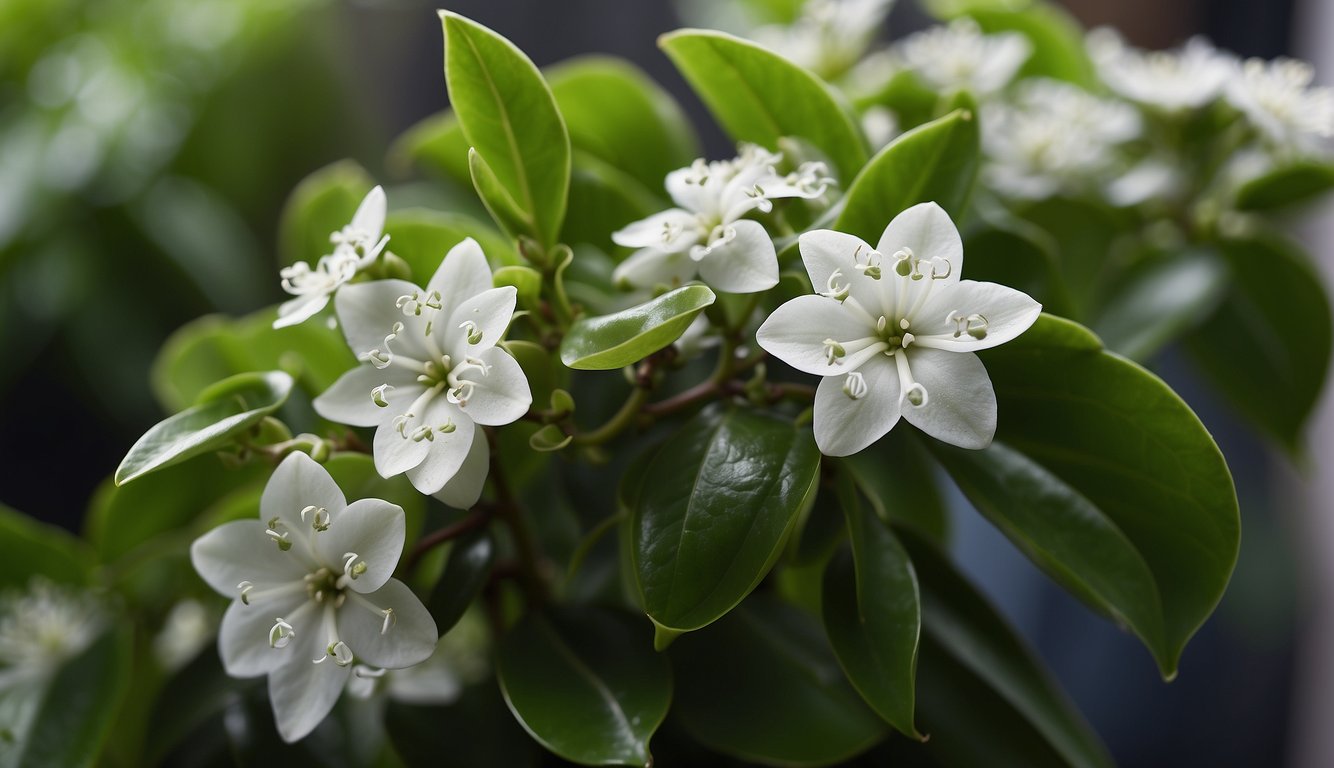
What are the stages of a Hoya plant’s bloom cycle?
The bloom cycle of a Hoya plant typically involves the following stages: bud formation, bud growth, bud maturation, and blooming. During the bud formation stage, small buds start to form on the plant. The buds then grow in size during the bud growth stage. Once the buds reach maturity during the bud maturation stage, they will start to open up and bloom.
How long does it typically take for a Hoya plant to bloom?
The time it takes for a Hoya plant to bloom can vary depending on several factors, including the species of the plant, the environmental conditions, and how well you care for your plant. In general, it can take anywhere from a few months to a few years for a Hoya plant to bloom.
Are there specific conditions that encourage flowering in Hoya plants?
Yes, there are specific conditions that encourage flowering in Hoya plants. These conditions include providing your plant with bright, indirect light, keeping the soil moist but not waterlogged, and feeding your plant with a balanced fertilizer during the growing season.
Is it normal for some Hoya species not to flower?
Yes, it is normal for some Hoya species not to flower. Some Hoya species are simply not as prolific bloomers as others. However, even if your Hoya plant is not blooming, it can still be a beautiful and healthy addition to your home.
What is the frequency of blooming for a Hoya plant under optimal conditions?
The frequency of blooming for a Hoya plant under optimal conditions can vary depending on the species of the plant. Some Hoya species can bloom several times a year, while others may only bloom once a year. It is important to research the specific needs of your Hoya plant to determine how frequently it is likely to bloom.
What care tips are essential for a Hoya during its flowering period?
During its flowering period, a Hoya plant requires consistent care to ensure that it continues to bloom. This includes providing your plant with bright, indirect light, keeping the soil moist but not waterlogged, and feeding your plant with a balanced fertilizer every 2-4 weeks. It is also important to avoid moving your plant during this time, as this can disrupt the blooming cycle.
